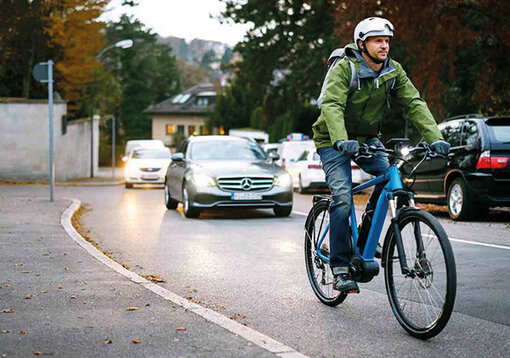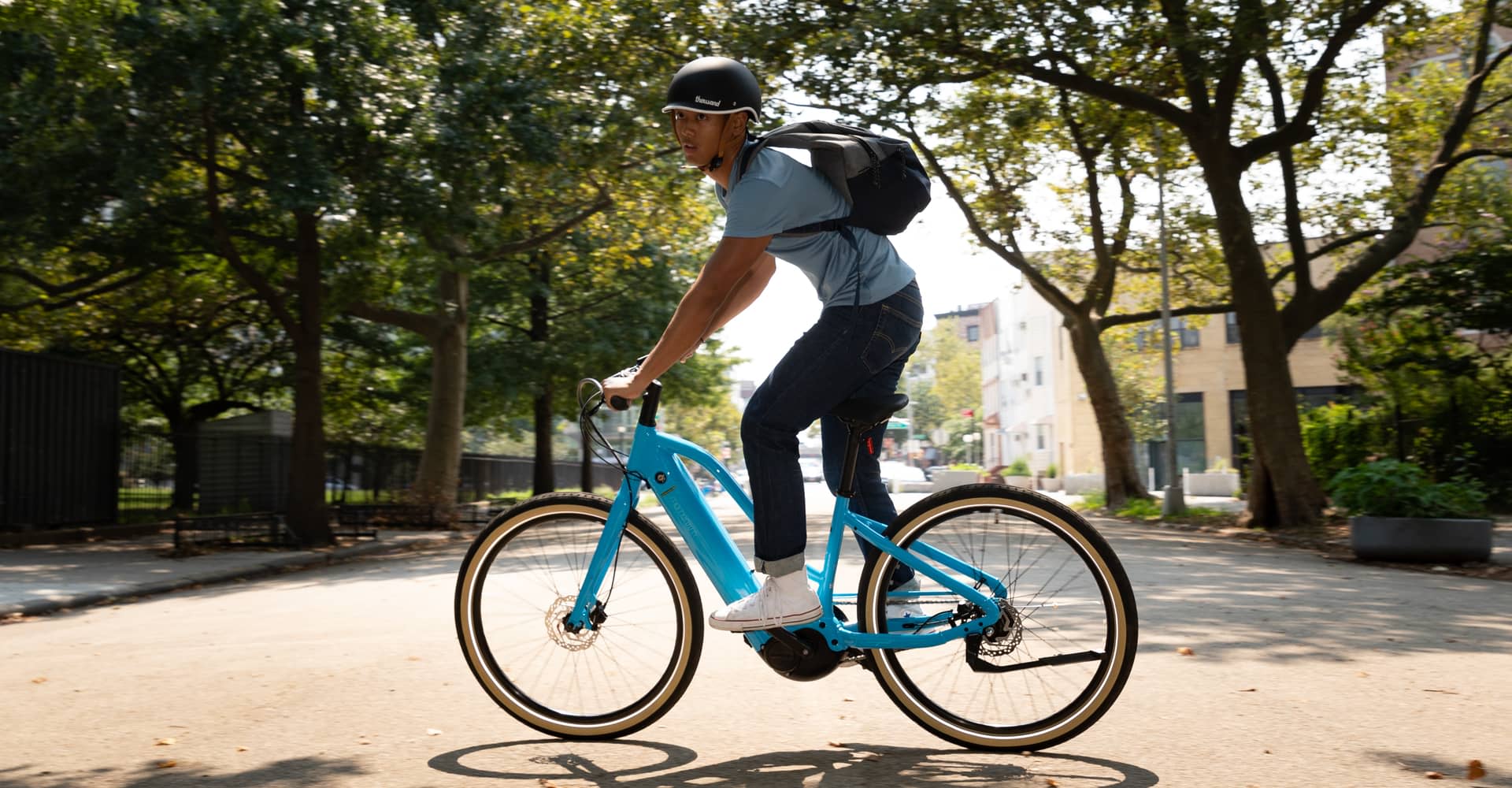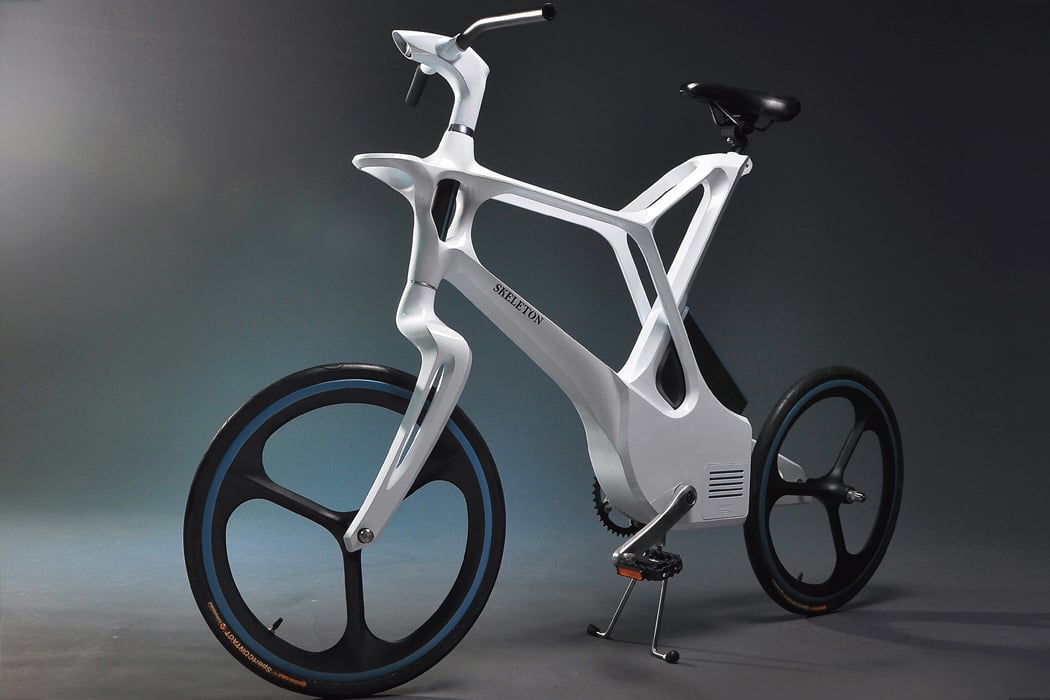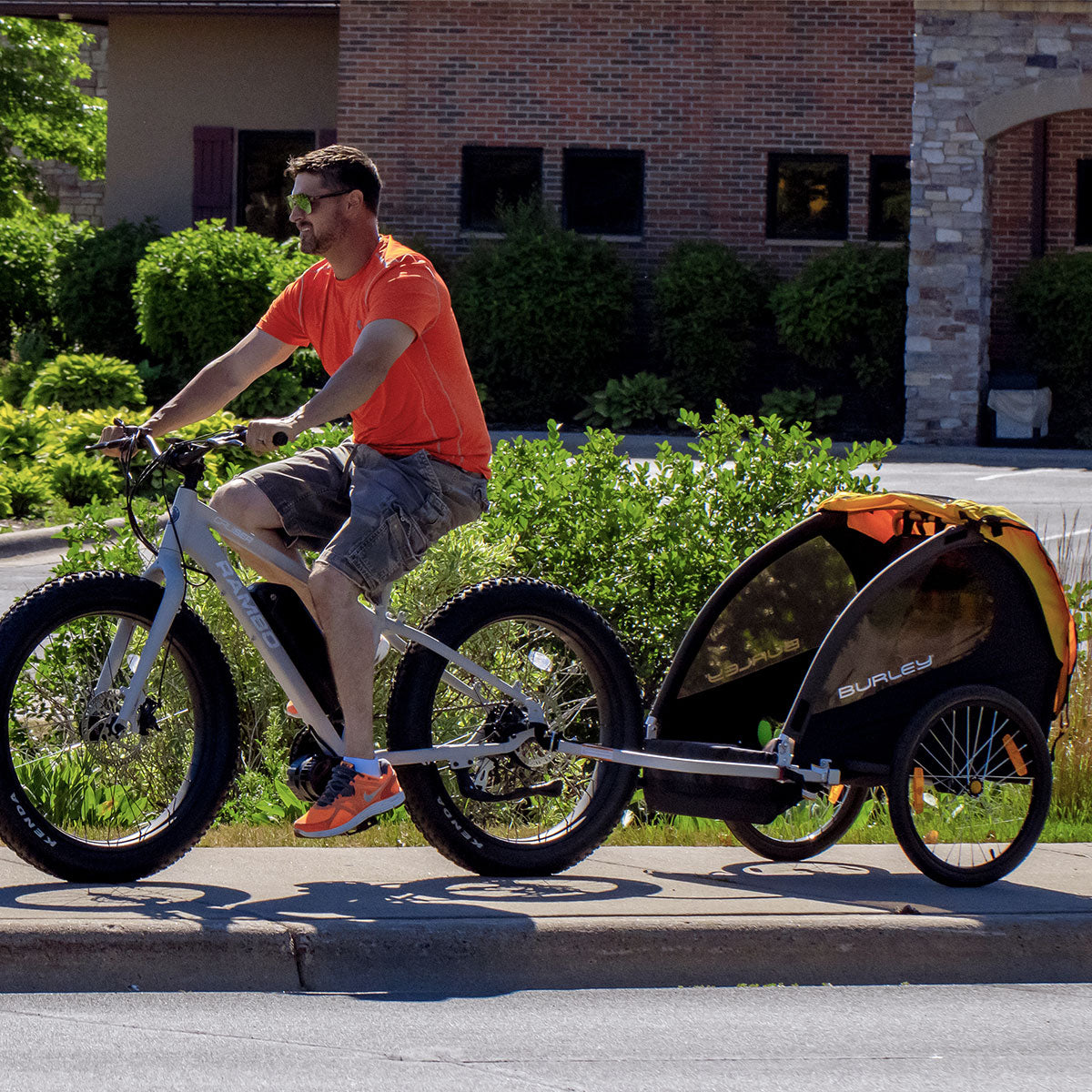Understanding eBikes: A Modern Approach to Urban Mobility
eBikes, or electric bicycles, have emerged as a popular transportation solution in urban environments. These vehicles combine the simplicity of traditional bicycles with the assistance of an electric motor, offering a unique blend of convenience, sustainability, and health benefits. The growing interest in eBikes reflects a broader shift towards active and eco-friendly commuting options, making them an attractive alternative to cars and public transportation.
The technology behind eBikes is relatively straightforward. A rechargeable battery powers an electric motor, which assists the rider during pedaling. This assistance can be adjusted based on the rider’s preferences, allowing for a customized riding experience. eBikes typically reach speeds of 20 to 28 mph, making them a practical choice for daily commuting. Moreover, eBikes require minimal maintenance compared to cars, further contributing to their appeal.
Commuting with an eBike offers several advantages over traditional modes of transportation. By choosing an eBike, commuters can enjoy cost savings, reduced environmental impact, improved health, and increased convenience. These benefits make eBikes an appealing option for urban commuters seeking a modern and sustainable approach to mobility.
How eBikes Enhance Your Commute: Key Benefits
Commuting with an eBike offers numerous advantages over traditional modes of transportation. By embracing this modern approach to urban mobility, commuters can enjoy cost savings, reduced environmental impact, improved health, and increased convenience.
Cost Savings
eBikes can provide significant cost savings compared to cars and public transportation. While the upfront cost of an eBike may be higher than a traditional bicycle, the long-term savings are substantial. eBike commuters can save on fuel, parking, and maintenance expenses, resulting in a more affordable commuting option. Additionally, many cities offer incentives and rebates for eBike purchases, further reducing the overall cost.
Reduced Environmental Impact
eBikes produce no tailpipe emissions, making them an environmentally friendly transportation solution. By choosing an eBike for daily commuting, individuals can reduce their carbon footprint and contribute to cleaner, healthier cities. Furthermore, eBikes require minimal resources for production and disposal, unlike cars, which have a significant environmental impact throughout their lifecycle.
Improved Health
Commuting with an eBike offers a low-impact, aerobic workout, which can improve cardiovascular health, strengthen muscles, and boost mood. eBikes provide assistance during pedaling, making it easier for commuters to maintain a consistent exercise routine, even during busy workweeks. Additionally, eBike commuters often report reduced stress levels, as cycling through city streets can be more enjoyable and less frustrating than driving or using public transportation.
Increased Convenience
eBikes offer unparalleled convenience for urban commuters. They can bypass traffic congestion, easily navigate narrow streets and bike lanes, and often provide a faster commute than cars or public transportation during peak hours. Furthermore, eBikes can be locked to any bike rack, eliminating the need for parking spots, and they require minimal storage space at home or in the office.

eBike Models: Selecting the Perfect Companion for Your Commute
When choosing an eBike for commuting, it is essential to consider factors such as range, comfort, and durability. A variety of eBike models cater to different preferences and needs, ensuring that commuters can find the perfect companion for their daily commute. Here are a few popular options:
Commuter eBikes
Commuter eBikes are designed for daily urban use, offering a balance between performance, comfort, and affordability. These eBikes often feature practical amenities such as integrated lights, fenders, and racks, making them well-suited for carrying work essentials. Examples of commuter eBikes include the Giant Quick-E+ and the Trek Verve+ Lowstep, which range in price from $2,000 to $3,500.
Folding eBikes
Folding eBikes offer the ultimate convenience for commuters with limited storage space or those who need to combine cycling with public transportation. These compact eBikes can be easily folded and carried, making them ideal for multimodal commuting. Popular folding eBikes include the Brompton Electric and the Tern Vektron P7i, with prices ranging from $2,500 to $4,000.
Cargo eBikes
Cargo eBikes are designed to carry heavy loads, making them an excellent option for commuters who need to transport large items or families. These eBikes often feature spacious front or rear cargo areas and may include electric pedal-assist or throttle-controlled systems. Popular cargo eBikes include the Yuba Super Marché and the Rad Power Bikes RadWagon, with prices ranging from $1,500 to $5,000.
Performance eBikes
Performance eBikes cater to commuters seeking a more exhilarating riding experience. These eBikes often feature high-performance motors, advanced suspension systems, and sleek designs. Examples of performance eBikes include the Specialized Turbo Levo and the Haibike sDuro HardSeven 10.0, with prices ranging from $3,500 to $8,000.
When selecting an eBike, consider your specific needs, budget, and preferences. By investing in a high-quality eBike tailored to your commuting requirements, you can enjoy the numerous benefits of commuting with an eBike and contribute to a more sustainable and efficient urban mobility landscape.
Navigating City Streets Safely: Tips for eBike Commuters
Embracing eBikes as a daily transportation solution requires a strong focus on safety. By adhering to traffic rules, using proper gear, and maintaining the eBike in good condition, commuters can ensure a secure and enjoyable riding experience. Here are essential safety guidelines and best practices for eBike commuters:
Follow Traffic Rules
Treat eBikes as you would any other vehicle on the road. Obey traffic signals, signs, and lane markings. Use designated bike lanes when available, and always ride in the direction of traffic. Remember to signal your intentions when turning or changing lanes, and be aware of vehicles and pedestrians around you.
Wear Appropriate Gear
Always wear a properly fitted helmet to protect your head in case of an accident. Dress in comfortable, weather-appropriate clothing that allows for a full range of motion. Reflective clothing or accessories can help increase your visibility in low-light conditions. Additionally, consider wearing protective gear such as gloves, knee pads, or elbow pads for extra safety.
Maintain Your eBike
Regularly inspect your eBike to ensure it is in good working condition. Check the tires for proper inflation and wear, and inspect the brakes, chain, and gears for any issues. Keep the battery charged, and clean and lubricate the chain as needed. If you notice any problems, consult the eBike’s user manual or seek professional assistance to address them.
Stay Alert and Visible
Maintain situational awareness at all times. Avoid distractions such as using headphones or mobile devices while riding. Make eye contact with drivers and pedestrians when possible, and use hand signals to indicate your intentions. In low-light conditions, use front and rear lights and reflectors to enhance your visibility.
Plan Your Route
Choose routes with dedicated bike lanes or less traffic when possible. Familiarize yourself with the route beforehand, and be prepared for potential hazards such as construction zones or busy intersections. Consider using navigation apps designed for cyclists, which can help you find the safest and most efficient route for your commute.
Ride Defensively
Assume that drivers and pedestrians may not see you, and always be prepared to take evasive action if necessary. Give vehicles and pedestrians plenty of space, and avoid riding too closely behind other cyclists or vehicles. When in doubt, yield to other road users and prioritize your safety over convenience.
By following these safety guidelines and best practices, eBike commuters can enjoy a secure and enjoyable riding experience. Remember that safety should always be your top priority when commuting with an eBike.

Integrating eBikes into Your Lifestyle: Practical Considerations
Transitioning to eBike commuting involves more than just purchasing an eBike. Considering the logistics of incorporating an eBike into your daily routine is crucial for a seamless experience. Here are some practical considerations to keep in mind:
Storage
Depending on your living situation, you may need to consider where to store your eBike securely. If you live in an apartment, check if there are designated bike storage areas or if you can bring the eBike inside. For those with garages or sheds, ensure there is enough space for charging and storing the eBike.
Charging
eBikes typically have a battery life of 20 to 100 miles, depending on the model and usage. Plan your charging strategy accordingly. Charge the eBike overnight or during work hours to ensure it’s ready for your commute home. Keep in mind that it’s best to avoid fully depleting the battery before recharging, as this can shorten its lifespan.
Maintenance
Regular maintenance is essential for keeping your eBike in good condition. Schedule routine check-ups with a professional eBike mechanic, and learn basic maintenance tasks such as fixing a flat tire or adjusting brakes. Keep a well-stocked repair kit on hand for emergencies, and consider purchasing an extended warranty for added peace of mind.
Range Anxiety
Range anxiety, the fear of running out of battery power during a commute, is a common concern for eBike commuters. However, with proper planning and an understanding of your eBike’s capabilities, you can minimize this issue. Use a range calculator to estimate how far you can travel on a single charge, and plan your route accordingly. Consider carrying a portable charger or spare battery if extended range is a concern.
Theft Prevention
eBikes can be attractive targets for thieves. Protect your investment by using high-quality locks, securing the eBike to a fixed object, and parking it in well-lit, high-traffic areas. Register your eBike with local law enforcement or a bike registry service, and consider purchasing insurance to cover theft or damage.
By addressing these practical considerations, you can seamlessly integrate an eBike into your daily routine. Embracing eBike commuting offers numerous benefits, including cost savings, reduced environmental impact, improved health, and increased convenience.

eBike Infrastructure: A Glimpse into the Future
As eBikes continue to gain popularity, the development of supporting infrastructure is crucial for their successful integration into urban mobility. Here’s a look at the current state of eBike infrastructure and future developments:
Bike Lanes
Dedicated bike lanes are essential for the safety and visibility of eBike commuters. Cities worldwide are expanding their bike lane networks, providing commuters with safer and more efficient routes. Look for cities that prioritize bike lanes and have clear signage to ensure a more enjoyable commuting experience.
Charging Stations
While eBike batteries typically last for several days of commuting, charging stations offer added convenience for those with longer commutes or limited charging options at home. Some cities and businesses are installing charging stations, allowing eBike commuters to top up their batteries during the day. As eBike adoption grows, so will the availability of charging stations.
Integration with Public Transportation
Combining eBikes with public transportation systems can provide a seamless and flexible commuting experience. Some cities offer bike-share programs, allowing commuters to rent eBikes for short trips or to complete the “last mile” of their commute. Additionally, some public transportation systems provide designated spaces for eBikes, making it easy to switch between modes of transportation.
Smart Technology
Smart technology is playing a significant role in the future of eBike infrastructure. Apps and platforms can help eBike commuters plan their routes, track their progress, and find charging stations or bike-share locations. As technology advances, we can expect more innovative solutions to support eBike commuting.
By investing in eBike infrastructure, cities can promote sustainable and efficient urban mobility, reduce traffic congestion, and improve the quality of life for their residents. Embracing eBike commuting offers numerous benefits, including cost savings, reduced environmental impact, improved health, and increased convenience.

Joining the eBike Community: Finding Support and Resources
Commuting with an eBike not only offers personal benefits but also connects you to a growing community of enthusiasts. By engaging with this community, you can access valuable support, advice, and inspiration to enhance your eBike experience. Here’s how:
Local eBike Communities
Search for local eBike clubs, groups, or forums in your area. These communities often organize group rides, workshops, and events, providing opportunities to meet like-minded individuals and learn from their experiences. Participating in these activities can help you build connections, gain confidence, and stay motivated in your eBike journey.
Online Forums and Social Media
Online platforms, such as forums, blogs, and social media groups, offer a wealth of information and support for eBike commuters. Engaging in these online communities allows you to connect with riders from around the world, ask questions, and share your experiences. Some popular eBike-related social media platforms include Strava, Reddit, and Facebook groups dedicated to eBikes.
eBike Blogs and YouTube Channels
Numerous eBike blogs and YouTube channels provide valuable resources for eBike commuters. These platforms offer product reviews, how-to guides, maintenance tips, and personal stories from eBike enthusiasts. By following these resources, you can stay informed about the latest trends, technologies, and best practices in eBike commuting.
Local Events and Expos
Attending eBike-related events and expos is an excellent way to immerse yourself in the eBike community. These events often feature product demonstrations, workshops, and networking opportunities, allowing you to learn from industry experts and connect with other eBike enthusiasts.
By tapping into the eBike community, you can enjoy a richer and more fulfilling commuting experience. The benefits of commuting with an eBike extend beyond personal advantages, as you become part of a movement promoting sustainable, efficient, and healthy urban mobility. Embrace the eBike community and unlock a world of support, resources, and inspiration to help you make the most of your eBike journey.

Overcoming Barriers: Making the Transition to eBike Commuting
Transitioning to eBike commuting can present several challenges, but with the right strategies, these barriers can be overcome. Here are some common concerns and potential solutions:
Upfront Costs
While eBikes may have a higher initial cost compared to traditional bikes, they can still be a cost-effective option in the long run. Consider the savings on fuel, parking, and vehicle maintenance. Additionally, eBikes are often eligible for government incentives, rebates, or financing options. By weighing these factors, you can make a more informed decision about the long-term value of an eBike.
Range Anxiety
Range anxiety, or the fear of running out of power during a commute, can be addressed through proper planning and understanding your eBike’s capabilities. Most eBikes offer a range of 20-100 miles per charge, depending on the model and battery size. By mapping your route, monitoring your battery level, and utilizing pedal-assist mode when needed, you can extend your eBike’s range and alleviate range anxiety.
Weather Concerns
Inclement weather can be a concern for eBike commuters, but proper gear and preparation can help. Invest in waterproof clothing, gloves, and shoe covers to stay dry and warm. Consider installing fenders on your eBike to protect against road spray. Additionally, many eBikes offer integrated lights and reflective elements to enhance visibility during low-light conditions.
Storage and Charging
Storing and charging your eBike at home or work can be easily managed with proper planning. Many eBikes can be charged using a standard electrical outlet, making it convenient to charge overnight or during work hours. For storage, consider installing a wall-mounted rack or investing in a secure outdoor storage solution. By addressing these practical considerations, you can ensure a smooth transition to eBike commuting.
Theft Prevention
Theft can be a concern for eBike commuters, but several solutions are available to mitigate this risk. Invest in a high-quality lock, such as a U-lock or heavy-duty chain lock, and secure your eBike to a fixed object when leaving it unattended. Consider registering your eBike with a bike registry service, which can aid in recovery if it is stolen. Additionally, some eBikes offer built-in theft prevention features, such as GPS tracking or remote disabling.
By addressing these common barriers, you can make the transition to eBike commuting smoother and more enjoyable. Embracing the benefits of commuting with an eBike, such as reduced environmental impact, cost savings, and improved health, can lead to a more fulfilling and sustainable urban mobility experience.


